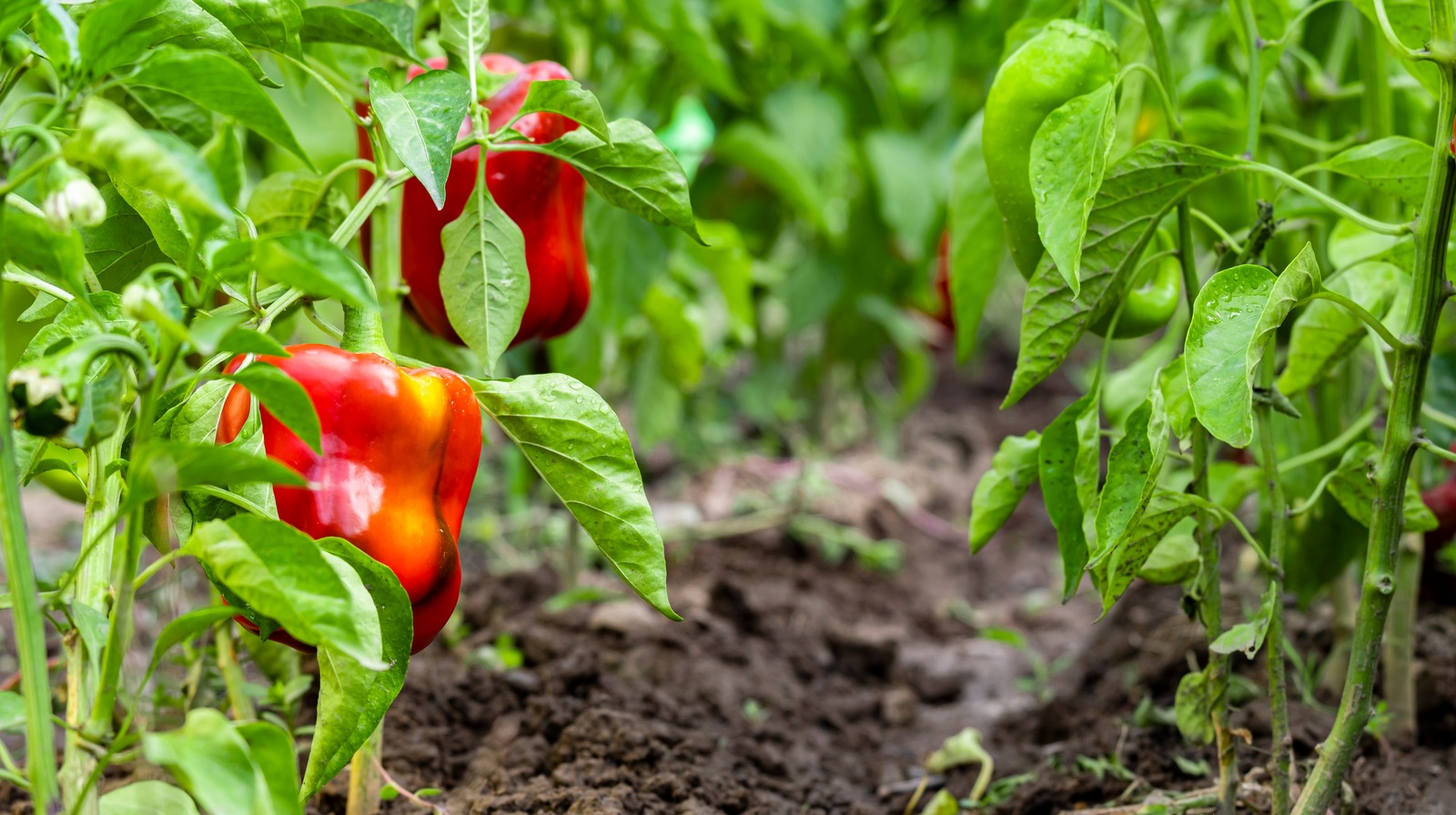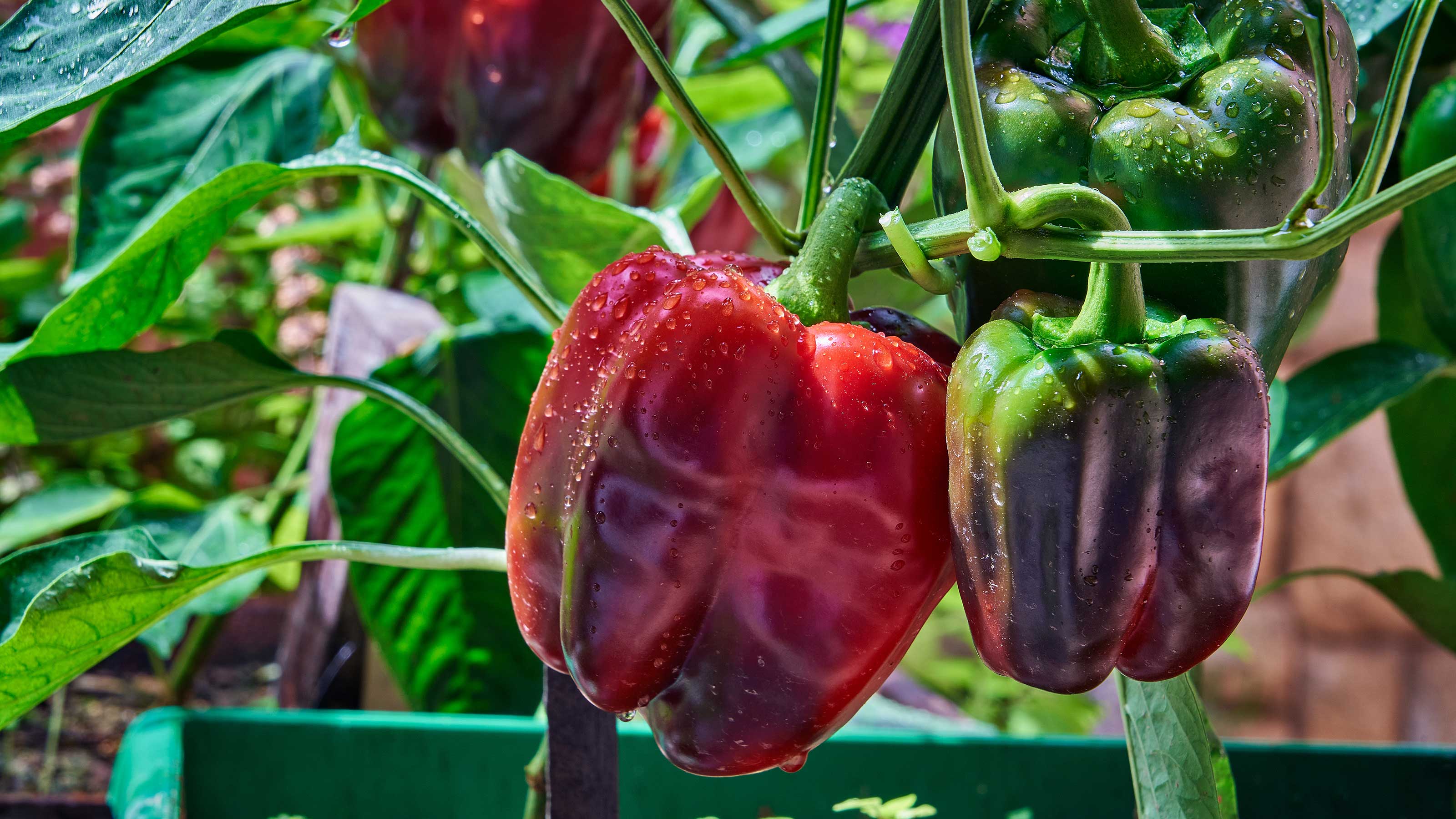Bell Pepper Companion Plants: 33 Plants to Grow With Bell Peppers
Boost Your Garden’s Productivity Naturally with These Strategic Pairings
Bell peppers are colorful, delicious, and a staple in home gardens. Whether you’re growing sweet red bells or crunchy green ones, your peppers will thrive best when grown alongside the right companions. Companion planting isn’t just about saving space—it’s about promoting growth, deterring pests, and encouraging biodiversity.
In this ultimate guide, you’ll discover 33 ideal companion plants for bell peppers, why they work, how to plant them, and how to troubleshoot common issues. Let’s transform your pepper patch into a powerhouse of productivity.

🌶️ Why Companion Planting Matters for Bell Peppers
Bell peppers are warm-season, sun-loving vegetables that need fertile, well-drained soil and a steady supply of nutrients. They’re vulnerable to a variety of pests and diseases—like aphids, spider mites, hornworms, and fungal issues. Companion planting:
- Deters harmful pests naturally
- Attracts beneficial pollinators and predators
- Improves soil fertility and structure
- Optimizes space and supports healthy growth
- Minimizes the need for synthetic pesticides or fertilizers
🌱 Bell Pepper Growing Needs at a Glance
Before diving into companion plants, here’s what bell peppers need to thrive:
- Sunlight: Full sun (6–8 hours daily)
- Soil: Well-draining, fertile, slightly acidic (pH 6.0–6.8)
- Water: Consistent moisture, not soggy
- Spacing: 18–24 inches apart
- Nutrients: High in phosphorus and potassium, moderate nitrogen
- Season: Warm-weather (plant after last frost)
✅ 33 Companion Plants to Grow With Bell Peppers
Below, we break down the best companion plants into categories: Pest Control, Soil Support, Pollinator Attractors, and Space Maximizers.
🐛 Natural Pest Deterrents
These plants help keep your bell peppers safe from common pests like aphids, thrips, spider mites, beetles, and caterpillars.
- Basil – Repels thrips, aphids, and spider mites; may even enhance pepper flavor.
- Marigolds – Fights nematodes and repels aphids, whiteflies, and beetles.
- Nasturtiums – Attract aphids away from peppers (trap crop); great for deterring whiteflies.
- Onions – Pungent smell confuses pests; deters aphids and slugs.
- Garlic – Similar benefits to onions; helps prevent fungal issues, too.
- Chives – Repels aphids and mites while improving the surrounding soil.
- Catnip – Deters flea beetles and aphids. Use with caution—it spreads aggressively.
- Parsley – Attracts beneficial predatory wasps and hoverflies.
- Dill – Attracts ladybugs, lacewings, and other predators.
- Cilantro – A dual-purpose herb that deters spider mites and attracts beneficial insects.
🌾 Soil-Improving & Nutrient-Supporting Plants

These companions fix nitrogen or improve soil texture and fertility, helping bell peppers develop strong roots and higher yields.
- Bush Beans – Fix nitrogen and improve soil health.
- Pole Beans – Provide similar benefits in vertical form.
- Peas – Add nitrogen to the soil and work well as early-season companions.
- Clover (Crimson/White) – A low-growing cover crop that fixes nitrogen and suppresses weeds.
- Carrots – Aerate the soil without competing heavily for nutrients.
- Beets – Non-invasive root crop that thrives in similar soil.
- Spinach – Acts as living mulch and grows well under pepper canopy.
- Radishes – Fast-growing and help break up compact soil for root development.
🐝 Beneficial Insect & Pollinator Attractors
These flowering plants bring pollinators and pest predators into the garden ecosystem, improving productivity naturally.
- Borage – Attracts bees and predatory wasps; can deter tomato hornworms.
- Alyssum – A low-growing flower that draws in hoverflies and pollinators.
- Yarrow – Attracts beneficial insects and improves soil over time.
- Tansy – Deters many flying pests but should be planted cautiously due to invasiveness.
- Sunflowers – Provide shade, attract pollinators, and act as structural support for climbing companions.
- Zinnias – Great for bringing in butterflies and beneficial bugs.
- Calendula – Acts as a trap crop for aphids and whiteflies while attracting good insects.
🧱 Space Optimizers & Protective Companions
These companions don’t compete with peppers and either provide shelter, vertical space savings, or act as living mulch.
- Lettuce – Quick to mature, shades soil, and won’t compete with peppers.
- Swiss Chard – Roots shallowly and grows vertically, avoiding competition.
- Kale – Grows well with peppers in cooler climates and provides ground cover.
- Endive – A compact green that thrives in the same conditions.
- Celery – Same water and light needs; helps with pest control.
- Cucumber – Low-lying, spreading plant that shares the same season and attracts pollinators.
- Tomatillo – Similar to tomatoes but often attracts beneficial insects; pair cautiously.
- Okra – Tall plant that can shade peppers slightly in extremely hot regions.
❌ What NOT to Plant with Bell Peppers
Not all plants play nice with peppers. These can inhibit growth or attract harmful pests:
- Fennel: Inhibits growth of many vegetables, including peppers.
- Brassicas (Cabbage, Broccoli, Cauliflower): Compete for nutrients and can attract unwanted pests.
- Potatoes: Share similar pests and disease (like blight); compete heavily for nutrients.
- Kohlrabi: Competes for the same nutrients and space.
- Apricot Trees: Fungal spores from peppers may harm apricot trees. Avoid planting peppers nearby.
🌟 Advanced Tips for Companion Planting with Bell Peppers

1. Rotate Your Crops
Avoid planting peppers in the same bed where other nightshades (tomatoes, eggplants, potatoes) were grown the previous season to reduce disease risk.
2. Use Living Mulches
Spinach, lettuce, or clover can act as living mulch to retain moisture and prevent weeds.
3. Practice Succession Planting
Plant fast-growing crops like radishes or greens early in the season, then replace them with peppers once temperatures warm up.
4. Space Wisely
Interplant aromatic herbs like basil or marigold between pepper plants to mask scent trails from pests while maintaining airflow.
5. Water Strategically
Companions with similar watering needs (like beans or celery) reduce the risk of over- or under-watering your peppers.
🐞 Common Problems & Companion Solutions
| Issue | Cause | Companion Plant Fix |
|---|---|---|
| Aphid infestation | Soft-bodied pests on leaves | Basil, chives, marigolds, nasturtiums |
| Spider mites | Hot, dry conditions | Cilantro, garlic, calendula |
| Poor fruit set | Lack of pollinators | Borage, alyssum, sunflowers |
| Stunted growth | Nutrient competition | Avoid brassicas, potatoes, fennel |
| Root rot or soggy soil | Overwatering or poor drainage | Plant with spinach or living mulch |
| Weak plant structure | Heat stress or poor airflow | Use okra or sunflowers for light shade |
Table of Contents
📋 FAQs: Bell Pepper Companion Planting
Q1: What is the single best companion plant for bell peppers?
Basil. It repels common pests, may enhance flavor, and grows in the same conditions.
Q2: Can I grow tomatoes and bell peppers together?
Yes, but cautiously. Both are nightshades and susceptible to similar diseases (like blight). Rotate beds yearly and provide ample space.
Q3: Are marigolds really effective against pests?
Yes! Especially against nematodes, aphids, and whiteflies. Plant them around pepper borders.
Q4: Do beans and peppers compete for nutrients?
Bush beans are great companions. They fix nitrogen, which supports pepper growth. Avoid planting climbing beans too close—they may shade peppers.
Q5: How can I maximize space in a small garden with peppers?
Use leafy greens like lettuce or spinach as understory crops. Taller companions like okra can create vertical layers.
Q6: What flowers help attract pollinators to bell peppers?
Zinnias, sunflowers, calendula, borage, and alyssum are excellent choices.
Q7: Can I plant peppers with cucumbers?
Yes, as long as there’s adequate spacing and airflow to prevent fungal issues.
Q8: Which herbs should I avoid near bell peppers?
Fennel is the main herb to avoid due to its allelopathic effects on peppers.
Q9: How close should companion plants be to peppers?
Herbs and flowers can be 6–12 inches away. Larger crops (like okra or beans) should be at least 18–24 inches away.
Q10: How do I organize my garden for peppers and companions?

Use alternating rows of peppers and herbs/flowers, border plant pest deterrents like marigolds, and tuck in leafy greens or legumes as space fillers.
🌼 Final Thoughts
Planting bell peppers with the right companions is a powerful way to grow a healthier, more abundant garden. Whether you’re focused on natural pest control, pollination, or maximizing yield, this list of 33 companion plants has you covered.
With strategic planting and crop rotation, you can build a pepper patch that’s not only productive—but beautiful, low-maintenance, and bursting with life.

